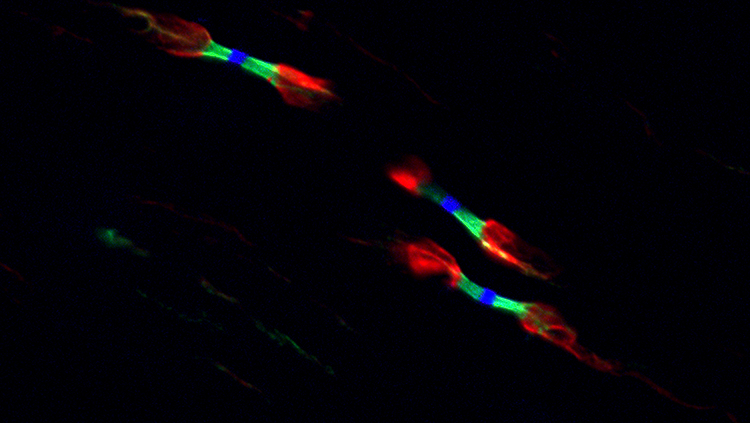Preface
We hope you find this account of the founding and first 50 years of the Society for Neuroscience (SfN) informative and enjoyable. It is the story of a new academic discipline and a new Society that were born and grew up rapidly together, interdependent and synergistic. It is also the story of an era when unusually rapid progress was made in understanding the brain, mind, and behavior, and of the women and men who made it happen.
Ever since Classical Antiquity in Western civilization, life scientists and philosophers have been especially interested in how the brain works because it is the organ of consciousness, of thinking and feeling, of what makes each one of us human in the deepest sense. But after the Renaissance revival of concern with the natural (rather than with the mystical or supernatural) world, life sciences research expanded rapidly. By the end of the nineteenth century, the field became more and more specialized, so that eventually researchers studying the nervous system were relatively isolated in academic departments and societies devoted to anatomy (structure), physiology (function), biochemistry, psychology (the mind), neurology (disorders of the nervous system), and psychiatry (disorders of the mind).
The founding of the SfN in 1969 signaled a reversal of this trend and the beginning of a new era. Just seven years earlier, Francis O. Schmitt had used the term “neuroscience” for the first time when he and others began the famous Neurosciences Research Program that was housed for many years at MIT. Schmitt and his colleagues recognized the counterproductive effects of fragmentation on nervous system research and decided to bring together specialists from disciplines as seemingly disparate as mathematics, psychology, molecular biology, and computer science for discussions of mutual interest that resulted in widely distributed publications.
SfN’s first annual meeting in 1971 greatly multiplied the scope of Schmitt’s vision. The meeting was held at the Shoreham Hotel in Washington, D.C., where a little more than 1,200 people attended. I was one of them, a graduate student looking for a postdoctoral position, attending lectures by thought leaders in the field, browsing research posters, looking at product exhibitions, and beginning to get to know neuroscientists of all ages from institutions other than my own. I did find a postdoc and a lifelong passion for neuroscience – and I also found in SfN an outlet to give back by serving on committees, holding office, and volunteering for outside activities. For all these reasons and many more, the Annual Meeting has become the mostimpactful of SfN activities and has been such a valuable personal growth experience that since 1971 I haven’t missed a single meeting, even though it has grown to around 30,000 attendees at massive convention centers in Washington, D.C., Chicago, and San Diego.
Over the years, the SfN’s activities have expanded dramatically to include two highquality research journals, a very successful public information website called BrainFacts. org, a plethora of career development tools, concerted advocacy efforts for the humane use of animals in medical research, and for increased federal funding to support neuroscience research. From the very beginning, the SfN has actively forged international partnerships to build scientific bridges around the globe. This effort has been so successful that now around 40% of our membership comes from outside the United States, and these members are playing increasingly important roles at the Annual Meeting, on committees, and especially as part of the elected leadership.
It is gratifying to acknowledge the generous support of the National Institutes of Health, and other national funding agencies across the globe in the growth of neuroscience research, which this Society showcases so effectively. Over the years, the number of attendees and the number of posters presented at the Annual Meeting is roughly proportional to the number of grants from the NIH to neuroscientists. This targeted funding has grown tremendously over the last 50 years and it represents a longterm investment by national governments in the future neurological and mental health of people around the world. Fortunately, support for basic and translational neuroscience research by public funding agencies (and increasingly by private agencies) around the world has increased in parallel, contributing to the dramatic internationalization of the SfN.
All great scientific societies, beginning with the Royal Society of London in the 1660s, are proud of their history and accomplishments, and our elected leadership and staff hope the foundation presented here fosters the same sentiment for the SfN. Efforts to document our history started long ago, but the thorny question always arose: which member could write a truly objective account? The stalemate was resolved during my SfN presidency (2012– 2013) when the professional medical history team at UCLA, led by Drs. Joel Braslow and Marcia Meldrum, was engaged to sort out the SfN archives and write the first half of the history, followed later by the second half. The results exceeded our expectations and lead us to wonder what the next 50 years will bring for the SfN and the field of neuroscience. Trying to predict the future is always risky, but it seems safe to assume that it will be innovative, expansive, diverse, and exciting.
Larry Swanson
Milo Don and Lucille Appleman Professor of Biological Sciences, University of Southern California
Co-chair (with Magda Giordano), 50th Anniversary Planning Working Group
Related


















